
CHAPTER TWO The Data of Macroeconomics macroeconomics N.Gregory Mankiw College of Management,HUST
macroeconomics N. Gregory Mankiw CHAPTER TWO The Data of Macroeconomics macro College of Management, HUST

Learning objectives In this chapter,you will learn about: Gross Domestic Product (GDP) the Consumer Price Index (CPD -the Unemployment Rate CHAPTER 2 The Data of Macroeconomics slide 1
CHAPTER 2 The Data of Macroeconomics slide 1 Learning objectives In this chapter, you will learn about: ▪ Gross Domestic Product (GDP) ▪ the Consumer Price Index (CPI) ▪ the Unemployment Rate
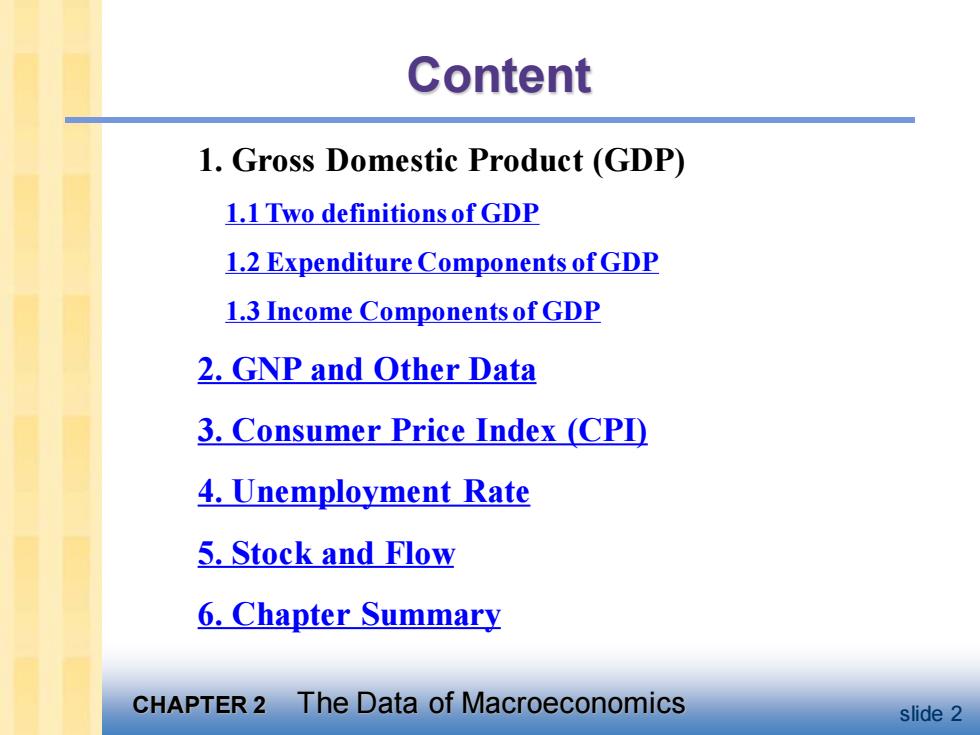
Content 1.Gross Domestic Product (GDP) 1.1 Two definitions of GDP 1.2 Expenditure Components of GDP 1.3 Income Components of GDP 2.GNP and Other Data 3.Consumer Price Index (CPD 4.Unemployment Rate 5.Stock and Flow 6.Chapter Summary CHAPTER 2 The Data of Macroeconomics slide 2
CHAPTER 2 The Data of Macroeconomics slide 2 Content 1. Gross Domestic Product (GDP) 1.1 Two definitions of GDP 1.2 Expenditure Components of GDP 1.3 Income Components of GDP 2. GNP and Other Data 3. Consumer Price Index (CPI) 4. Unemployment Rate 5. Stock and Flow 6. Chapter Summary
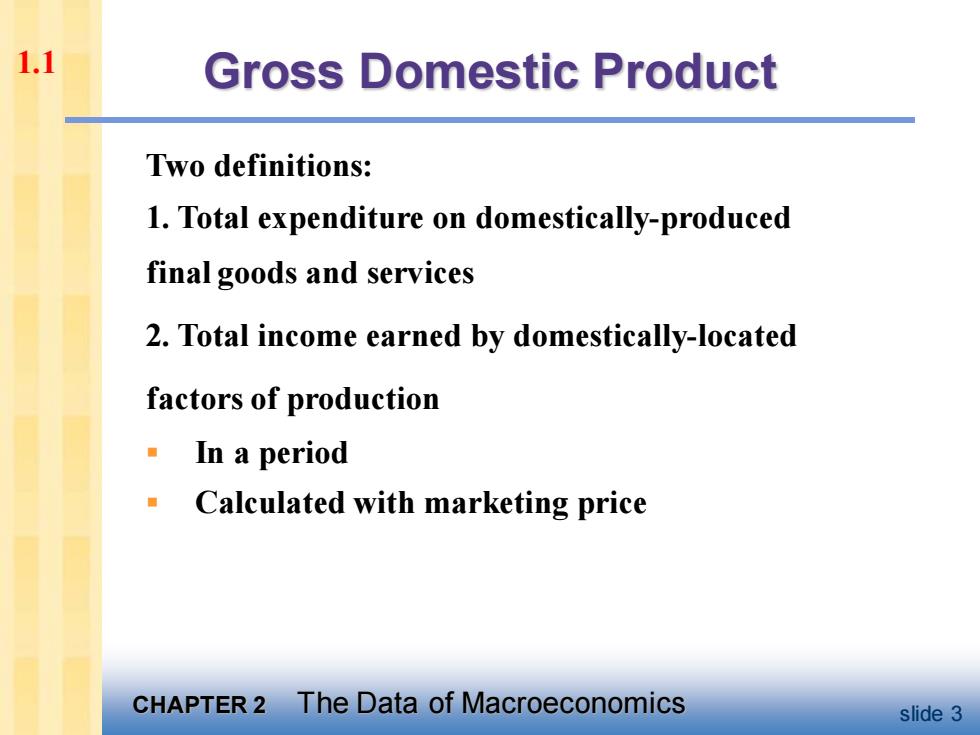
1.1 Gross Domestic Product Two definitions: 1.Total expenditure on domestically-produced final goods and services 2.Total income earned by domestically-located factors of production In a period Calculated with marketing price CHAPTER 2 The Data of Macroeconomics slide 3
CHAPTER 2 The Data of Macroeconomics slide 3 Gross Domestic Product Two definitions: 1. Total expenditure on domestically-produced final goods and services 2. Total income earned by domestically-located factors of production ▪ In a period ▪ Calculated with marketing price 1.1

1.1 Why expenditure income In every transaction, the buyer's expenditure becomes the seller's income. Thus,the sum of all expenditure equals the sum of all income. CHAPTER 2 The Data of Macroeconomics slide 4
CHAPTER 2 The Data of Macroeconomics slide 4 Why expenditure = income In every transaction, the buyer’s expenditure becomes the seller’s income. Thus, the sum of all expenditure equals the sum of all income. 1.1
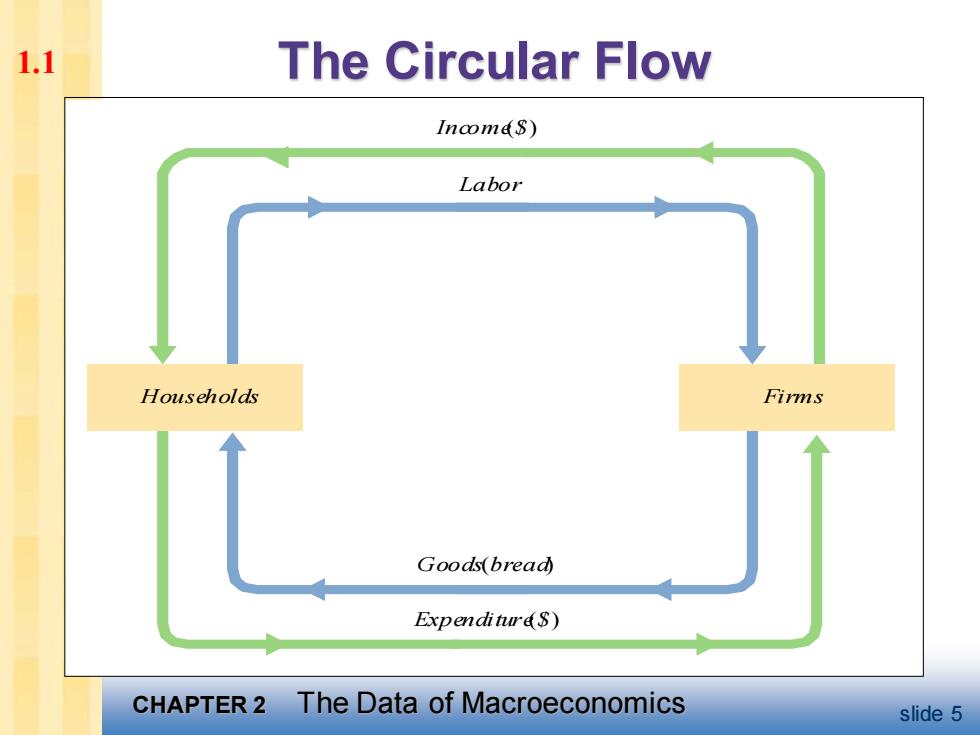
1.1 The Circular Flow IncomdS) Labor Households Firms Goods(bread ExpenditurdS) CHAPTER 2 The Data of Macroeconomics slide 5
CHAPTER 2 The Data of Macroeconomics slide 5 The Circular Flow Income ($) Labor Goods (bread) Expenditure ($) Households Firms 1.1
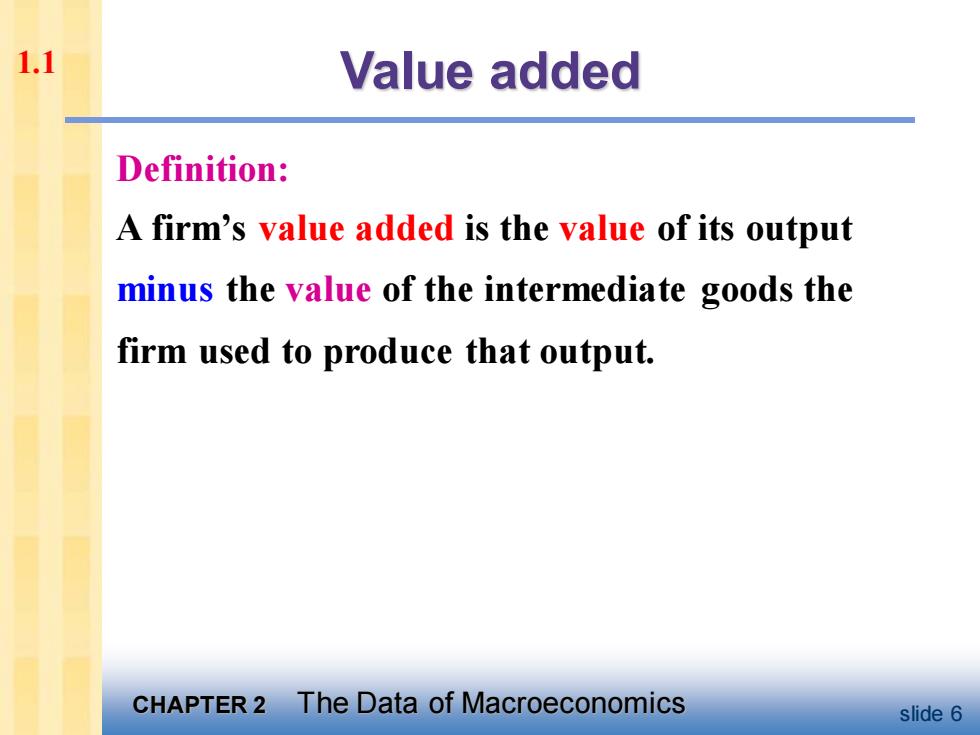
1.1 Value added Definition: A firm's value added is the value of its output minus the value of the intermediate goods the firm used to produce that output. CHAPTER 2 The Data of Macroeconomics slide 6
CHAPTER 2 The Data of Macroeconomics slide 6 Value added Definition: A firm’s value added is the value of its output minus the value of the intermediate goods the firm used to produce that output. 1.1

1.1 Exercise:(Problem 2,p.38) A farmer grows a bushel of wheat and sells it to a miller for $1.00. The miller turns the wheat into flour and sells it to a baker for $3.00. The baker uses the flour to make a loaf of bread and sells it to an engineer for $6.00. The engineer eats the bread. Compute value added at each stage of production GDP CHAPTER 2 The Data of Macroeconomics slide 7
CHAPTER 2 The Data of Macroeconomics slide 7 Exercise: (Problem 2, p.38) ▪ A farmer grows a bushel of wheat and sells it to a miller for $1.00. ▪ The miller turns the wheat into flour and sells it to a baker for $3.00. ▪ The baker uses the flour to make a loaf of bread and sells it to an engineer for $6.00. ▪ The engineer eats the bread. Compute – value added at each stage of production – GDP 1.1
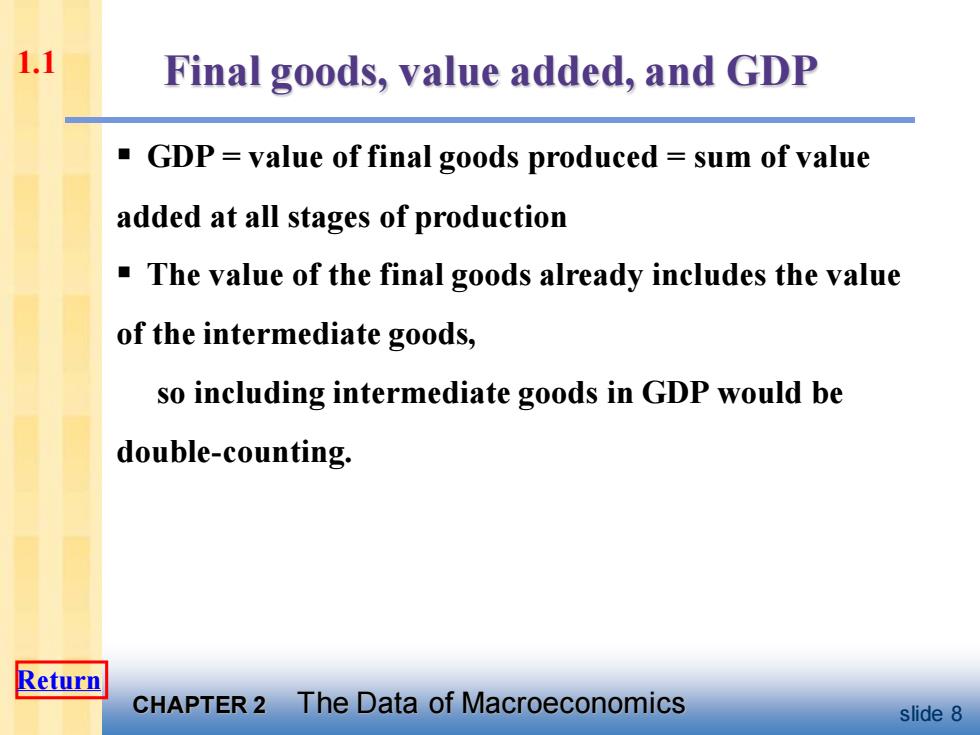
1.1 Final goods,value added,and GDP ■ GDP value of final goods produced sum of value added at all stages of production The value of the final goods already includes the value of the intermediate goods, so including intermediate goods in GDP would be double-counting. Return CHAPTER 2 The Data of Macroeconomics slide 8
CHAPTER 2 The Data of Macroeconomics slide 8 Final goods, value added, and GDP ▪ GDP = value of final goods produced = sum of value added at all stages of production ▪ The value of the final goods already includes the value of the intermediate goods, so including intermediate goods in GDP would be double-counting. 1.1 Return
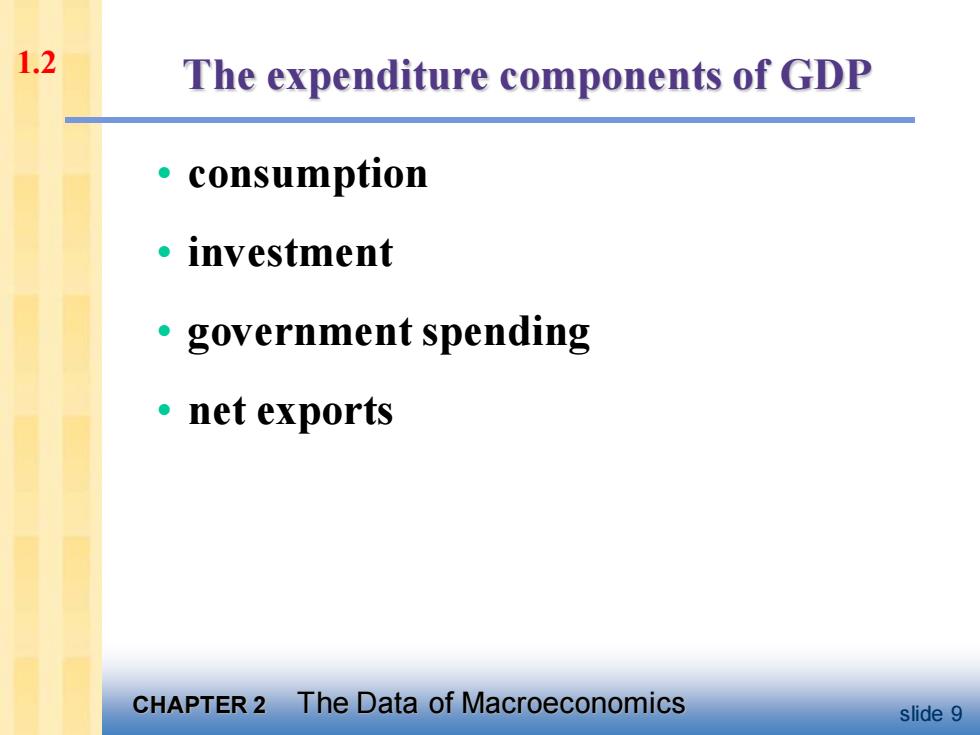
1.2 The expenditure components of GDP consumption 。investment ·government spending ·net exports CHAPTER 2 The Data of Macroeconomics slide 9
CHAPTER 2 The Data of Macroeconomics slide 9 The expenditure components of GDP • consumption • investment • government spending • net exports 1.2